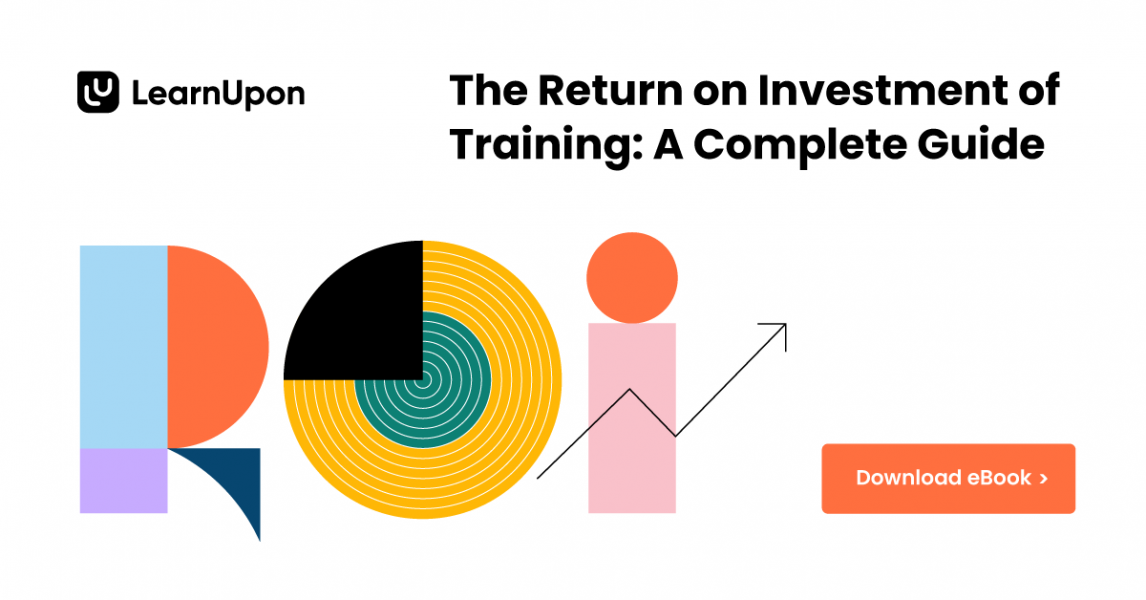
4 min reading time
Why Don’t Businesses Measure Training ROI?
Across the training industry, we’ve noticed a pattern: more and more businesses want to measure the impact of training programs. However, an overwhelming 61% of training leaders said that they don’t measure training ROI.
We wanted to know why. We wanted to know what is blocking today’s training leaders from assessing the return on investment of their programs. So we asked.
With over 80 respondents, our training ROI survey uncovered the real reasons businesses aren’t calculating success, and the important ways to overcome these barriers.
“We don’t have clear goals.”
“We don’t have clear goals set by the organization itself and have to create our own local goals, making determining what and how to measure ROI more difficult.”
The most frequently chosen answer in our survey, 54% of learning leaders believe lack of clear company goals is the primary reason for stymied ROI measuring.
This is no big surprise. It’s been reported previously that only 40 percent of companies say that their learning strategy is aligned with business goals, and this isn’t a good place to be. Without input from others in leadership, or a lack of company goals, you team is left to create their own. This makes it difficult to pinpoint key metrics, leaving you and your team with a lack of understanding of what’s important across the organization.
To get everyone singing from the same sheet, gather feedback from your peers in other departments. Uncover the objectives other teams have, and look at how your training programs can help them to achieve them. Make sure you fully understand other’s objectives and show how a training initiative can provide the right skills for the jobs at hand.
“We just don’t have the resources to accomplish.”
A lack of resources within any department puts a strain on things, including training. For 43% of our respondents, this was a leading factor that impedes their ability to measure ROI. Be it team size, budget restrictions, outdated tools, packed schedules, many believe they are not measuring ROI because they simply can’t.
There’s no easy fix to a lack of resources within your department, but turning to other departments to get leadership buy-in is a great first step.
What’s crucial to know here, is that you don’t have to calculate everything yourself. Tap into the resources outside of your learning team; you’ll be surprised at the sheer scale of data other teams collect for their own reports and you might find exactly what you’re looking for. Say you’ve just rolled out a new customer onboarding training program and you need to know how effective it is in reducing customer onboarding time. Why not ask the sales and success departments for success metrics they have showing a decrease in time to launch for new customers. If you’re unsure what to ask them for, some good metrics are the percentage of launched, active and churned customers. Compare these metrics before and after your customer onboarding training was implemented.
“We don’t think training is a priority.”
“It wasn’t previously on the agenda, it wasn’t previously classed as an important issue.”
Worryingly, some of our respondents felt that their company hadn’t properly prioritised their future capability needs against the learning strategy.
The best advocate for the importance of learning is you, the learning leader. Easier said than done, I hear you say. One way to get learning and training top of mind for your organization is to show the results of major training campaigns. Look at your course portfolio and pick out the company-wide training. This could be anything from customer and employee onboarding, to health and safety compliance training. Without your department, this crucial training wouldn’t have been achieved.
“We don’t know where to begin.”
“No one is really sure how to do this. We try with knowledge checks and surveys to see if training has helped, but we are not even sure of the right questions to ask.”
50% of respondents felt it was difficult to measure their training ROI. Some observed that certain types of training were more difficult than others to measure, while others remarked that the overall L&D industry impact can be too broad. After deep-diving into the results, we discovered that 44% of respondents thought that a lack of data was a major challenge to accurately measuring training ROI.
Based on the above figures, we believe that there’s a knowledge gap for those tasked with training measurement and capturing training data. This gap can come from inexperience, which leads to uncertainty. It makes sense that if you don’t know where to start measuring or pulling data from, you’ll struggle to show the value of your training in terms of its ROI.
Don’t let a fear of the unknown stop you from measuring ROI. Once you start finding statistics, no matter their size, you’ll become aware of what to do through trial and error. This is an important stage of discovery, so learn what numbers work for you and what don’t. The more you practice calculating training ROI, the more confident you’ll become demonstrating the impact of the training programs you’re leading.
Discover the right metrics to measure by watching Dr. Jack J. Phillips, Chairman of the ROI Institute, demystify how to accurately predict and measure the return on investment of training for your business. You can use the method shared in this session as a way to learn how to forecast your ROI and utilize these numbers as a way to set goals.
What do we think about measuring training ROI?
We asked Frances Kleven, Manager of LearnUpon’s Customer Success Team, her opinion on why it can be challenging for businesses to measure their training’s return on investment. Here’s what she had to say:
“It’s exciting to create and build things but it’s scary to then measure the impact of what you’ve built partly because you don’t know how and partly because you don’t know what those results will reveal.”
Our survey revealed a huge gap in how, and if, companies measure the return on investment of their training. We’d like to change that. Guided by the results of our survey, we’ve created an eBook “The Return on Investment of Training: A Complete Guide”, which comes with a handy template aimed at helping you to measure your training ROI. Start finding the metrics you need to demonstrate the importance of your L&D department.




